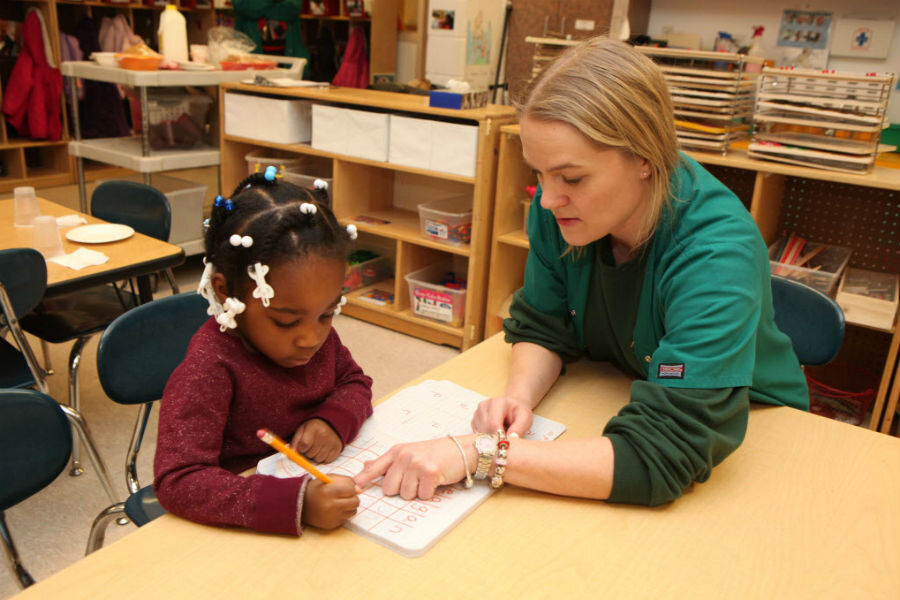Head Start's state-to-state gaps noted in most comprehensive report card yet
Loading...
Head Start just received its first nationwide report card – and improving consistent quality is at the top of the agenda.
In the most comprehensive study of the program yet, “State(s) of Head Start,” released Wednesday, researchers from the National Institute for Early Education Research, at Rutgers University, looked at data on Head Start programs from all 50 states, the District of Columbia, and US territories.
The study calls for a revived discussion of how Head Start can serve all children in poverty. Increasing funding is a significant part of that conversation, the study’s authors say, noting that programs cannot serve all children – and serve them well – with their current limited resources.
Head Start, founded by President Lyndon B. Johnson in 1965 as part of his “War on Poverty,” is primarily funded by the federal government, in addition to local funding. Orange County, Fl., for instance, contributes more than $900,000 to the county’s 84 Head Start classrooms, program manager Sonya Hill told the Orlando Sentinel.
The program is intended to provide education, nutrition, and health services to low-income families and children, helping these children overcome the barriers presented by poverty before they begin elementary school. Last year, the program received $8.6 billion in federal funding.
In principle, preschool programs provide a fantastic return on investment, both for families and for society. A study by researchers at the University of Chicago and University of Southern California, released on Sunday, found that high-quality preschool programs can create about $6 of annual return for every dollar spent.
“I was a Head Start student,” Ms. Hill told the Orlando Sentinel. “I know the program works. There’s no doubt in my mind.”
In “State(s) of Head Start,” the study’s authors explain where Head Start is working and where it is less successful. Kentucky and Vermont came out on top overall, they found. But there are important differences in where states spend their limited money – and these disparities affect educational quality.
"Do we serve more children or fewer children? Do we offer more hours or fewer hours? Do we pay teachers more or less?" Steve Barnett, a professor at Rutgers University who directed the study, told NPR, adding, "We can't do all those things."
Almost half the children in the country could be eligible for Head Start, Professor Barnett told the Washington Post, since it is meant to serve children in "near-poor" households as well as those in poverty. But while some states, like North Dakota, serve almost all eligible children, many others serve about one-third or less.
Some programs have longer hours, while others offer fewer. Longer hours can be helpful for working parents, but providing more care tends to mean lower quality across the board, Barnett told NPR.
Disparities in teacher qualifications and pay are another problem holding back instructional quality. On average, Head Start teachers with a bachelor's degree earned about $33,000, but average teachers' pay was less than $30,000 in fifteen states.
The stakes of early childhood education go beyond preschool. "Low quality education has an intergenerational dimension," James Heckman, a Nobel laureate in economics and professor at the University of Chicago, one of the authors of the recent study on preschool return-on-investment, told The Christian Science on Monday. "It actually is producing children who may be impaired relative to those who have quality care."
Giving all eligible children access to high-quality preschool would require tripling the current budget to more than $20 billion, the Rutgers study concluded. The researchers recommended bringing together a bipartisan commission to address the current issues.
“Everybody is going to have to come to the table,” Barnett told the Washington Post. “This is not an easy problem. It’s not just a matter of saying you should just appropriate $14 billion more.”








